
SaaS Upselling vs Cross-Selling Guide

par
Wiktoria Slowikowska
18 sept. 2024
Identifiez et convertissez vos utilisateurs les plus importants
Créer un compte
Upselling and cross-selling are two crucial strategies that can significantly boost revenue and enhance customer satisfaction.
While both techniques aim to increase sales, they do so in different ways. This guide will explore these methods in depth, providing SaaS companies with valuable insights to optimize their sales approach.
Key Takeaways
Upselling encourages customers to purchase a more advanced or expensive version of a product, while cross-selling promotes complementary products.
Both strategies can significantly increase a company's revenue and customer lifetime value.
Effective implementation requires understanding customer needs, proper timing, and personalization.
Challenges include potential customer resistance and the risk of overwhelming users with options.
Successful SaaS companies use data-driven approaches to refine their upselling and cross-selling techniques.
Understanding Upselling and Cross-Selling in SaaS
What Is Upselling?
In the SaaS context, upselling involves encouraging customers to upgrade to a more feature-rich or higher-tier version of the software they're currently using or considering. For example, a project management tool might offer a premium plan with advanced reporting and analytics features to users of their basic plan.
What Is Cross-Selling?
Cross-selling in SaaS refers to the practice of suggesting additional, complementary products or services to customers. For instance, a company using a CRM solution might be offered an integrated email marketing tool to enhance their overall sales and marketing capabilities.
Key Differences
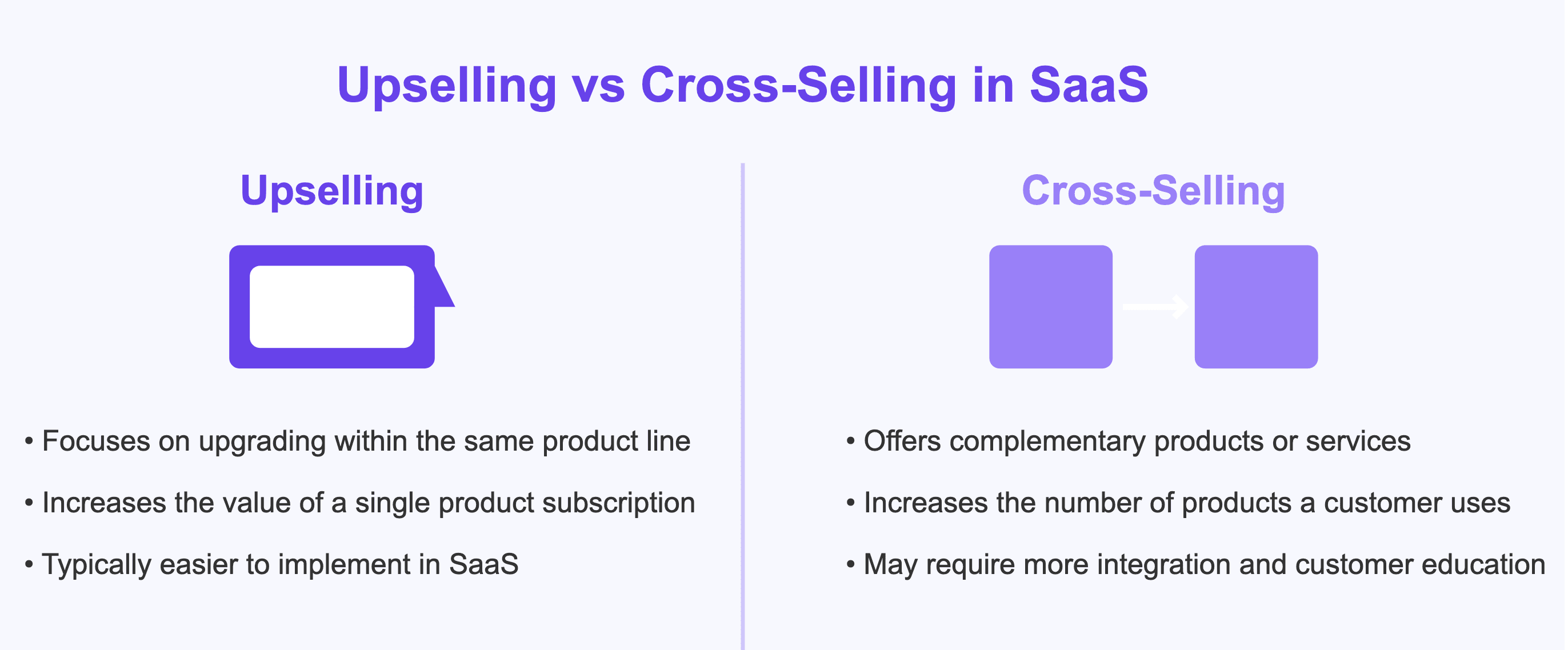
Effective Strategies for Upselling in SaaS
Identifying Opportunities
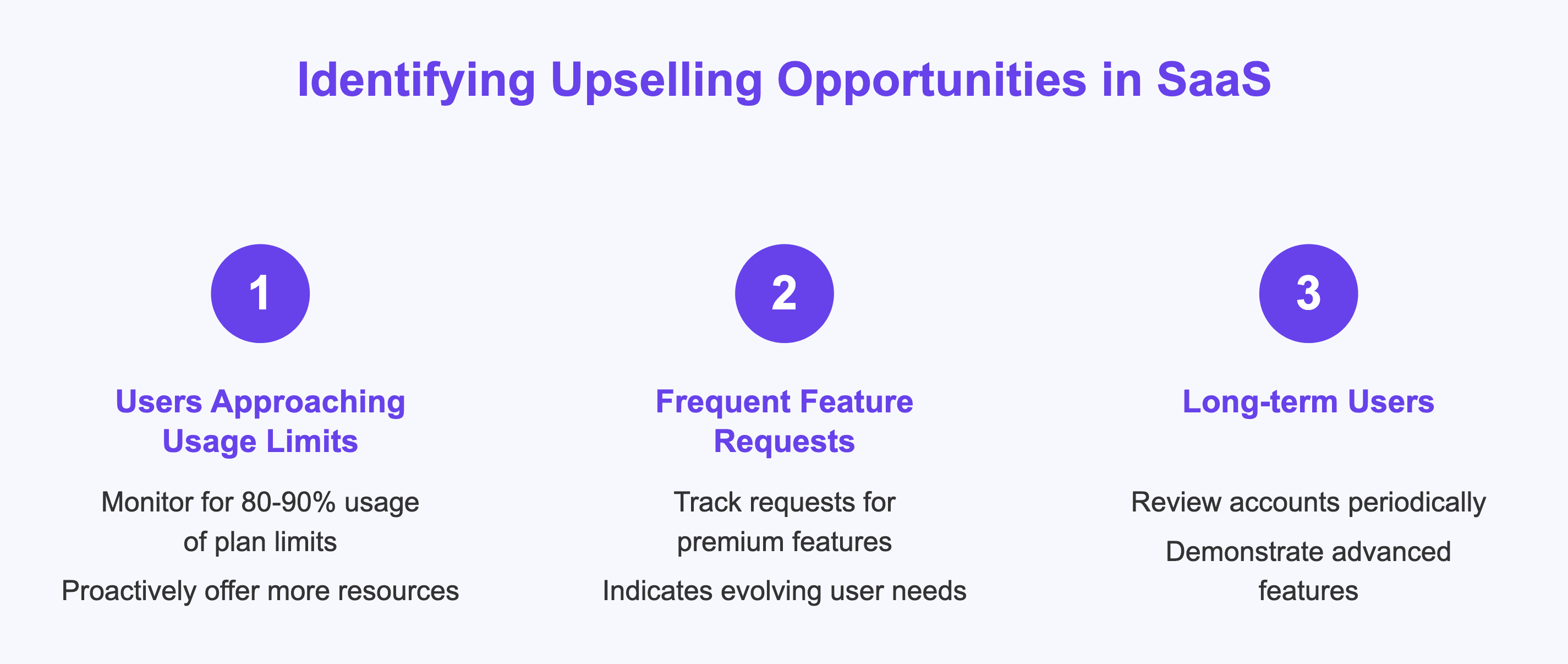
To successfully upsell, SaaS companies should look for:
Users approaching usage limits on their current plan
Monitor account usage patterns. When users consistently reach 80-90% of their plan's limits (data storage, number of users, API calls), it indicates they may need more resources. Proactively reaching out can prevent service disruptions and improve user experience.Customers frequently requesting features available in higher tiers
Track and analyze feature requests. Repeated inquiries about functionalities in premium plans suggest evolving user needs. This information helps in understanding how an upgrade could address specific requirements and enhance overall product satisfaction.Long-term users who may benefit from advanced functionalities
Conduct periodic reviews of long-term accounts. These users, familiar with basic offerings, might be unaware of how newer, advanced features could optimize their workflows. Personalized demonstrations can show how additional capabilities could address unrecognized pain points.
Timing Your Upsell
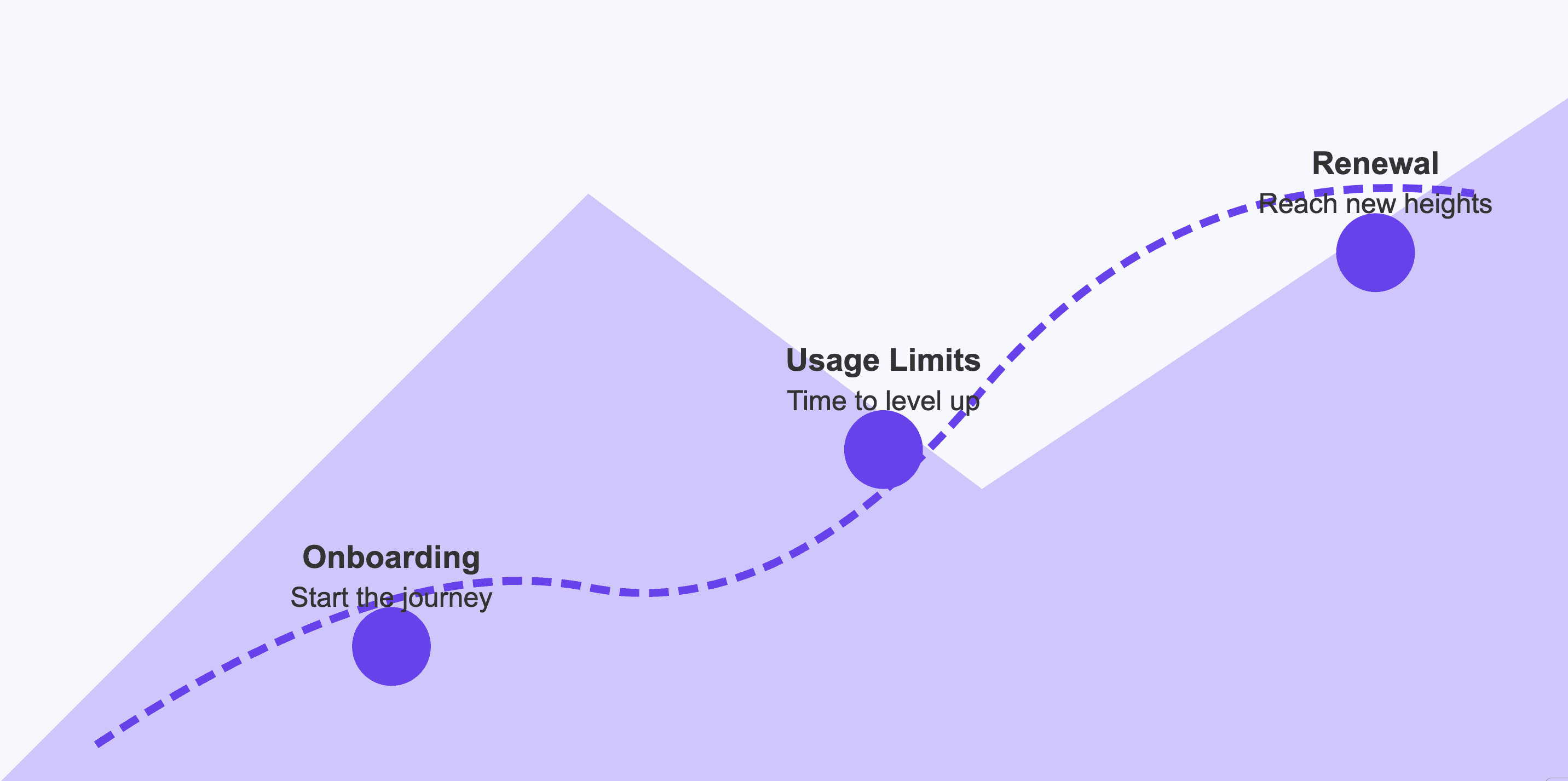
Knowing when to present an upgrade can mean the difference between a grateful "yes" and an annoyed "not now." Let's explore the three golden opportunities for upselling that can turn your offers into welcome suggestions:
During the Onboarding Process
The onboarding phase is like a product tour. As users explore your SaaS, they're most receptive to learning about features. This is an ideal time to showcase premium offerings. Highlight how advanced features in higher tiers could enhance their experience right from the start.When Customers Hit Usage Limits or Frequently Use Trial Features
This is the digital equivalent of "try before you buy." When users max out their current plan or repeatedly use premium features in trials, they're signaling interest in more capabilities. Capitalize on this moment by offering an upgrade that aligns with their demonstrated needs and usage patterns.At Renewal Periods
Renewal time prompts users to reflect on the value they're getting. It's a natural checkpoint for customers to reassess their needs. Use this opportunity to highlight how an upgrade could better support their growth in the coming period. Present a clear comparison of their current usage versus the benefits of the next tier up.
Crafting Compelling Offers
Effective upsell offers in SaaS should:
Clearly demonstrate the added value of the higher-tier plan
Show how specific new features solve real problems. Use simple examples to illustrate tangible benefits, like how advanced analytics can boost productivity or decision-making.
Offer a seamless upgrade process
Provide a one-click upgrade option within the user interface. Ensure all data transfers automatically and new features are immediately accessible. Make it feel like a natural progression, not a complex task.
Provide a risk-free trial of premium features when possible
Let users experience premium features before committing. Offer time-limited or usage-based trials. Clearly mark which features are part of the higher tier during the trial period.
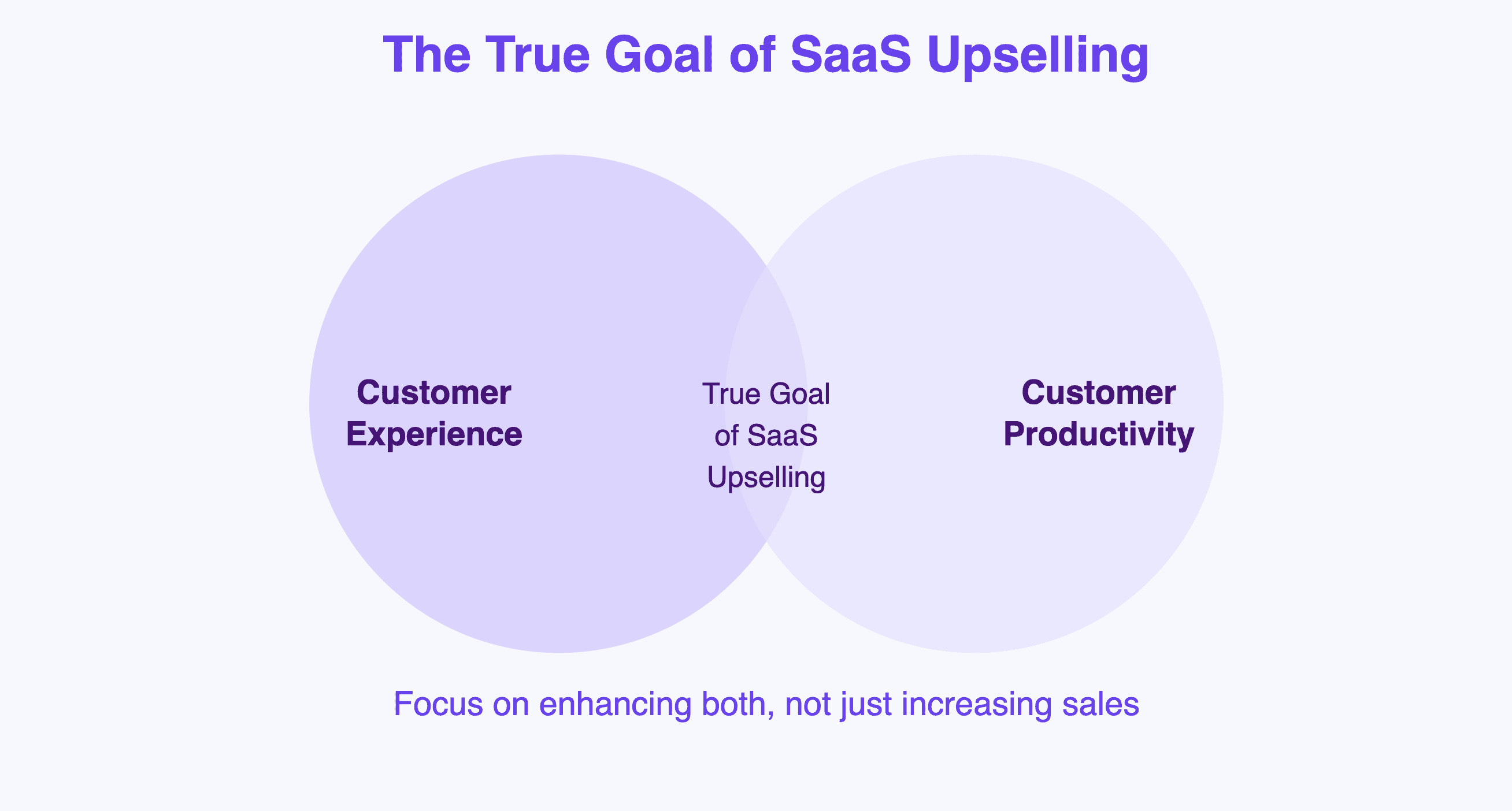
Cross-Selling Techniques That Work in SaaS
Identifying Complementary Products
Now let's talk about the key elements of successful cross-selling in SaaS:
Understanding the customer's workflow and pain points
Go beyond basic product knowledge. Analyze how customers actually work day-to-day. Use conversations, surveys, or usage data to identify bottlenecks and frustrations. This insight helps you suggest products that address real, often unspoken needs.Offering products that integrate well with their current solutions
Focus on seamless integration. Highlight tools that work well with the customer's existing setup. Show how these integrations can streamline workflows or provide a more comprehensive operational view. The goal is to demonstrate how the new product fits naturally into their ecosystem.Focusing on tools that enhance overall productivity or solve related challenges
Think broader than immediate needs. Suggest tools that can boost productivity across different areas. Consider products that address connected or complementary issues. Show how additional tools can create a more comprehensive and efficient work environment overall.
Utilizing Customer Data
Leverage user data to inform cross-selling efforts:
Analyze usage patterns to identify potential needs
Look at how customers use your product. Are they maxing out certain features? This could indicate they're ready for more advanced tools. Low usage in some areas might suggest a need for complementary products to fill gaps.
Use customer segmentation to tailor offers
Group customers based on characteristics like company size, industry, or feature usage. This allows you to create targeted offers that resonate with each segment's specific needs and pain points.
Track industry trends to anticipate future requirements
Stay ahead by monitoring developments in your customers' industries. This foresight helps you suggest products that will keep your customers competitive and prepared for upcoming challenges.
Creating Personalized Offers
Personalization is key in SaaS cross-selling:
Use in-app notifications to suggest relevant tools based on user behavior
Implement targeted email campaigns highlighting complementary products
Offer bundled discounts for suite of tools that work well together
Benefits of Upselling and Cross-Selling in SaaS
Increased Revenue and Customer Lifetime Value
Both strategies can significantly boost a company's bottom line:
Upselling increases the average revenue per user (ARPU)
Cross-selling expands the product footprint within a customer's organization
Both lead to higher customer lifetime value (CLV)
Enhanced Customer Experience and Retention
When done right, these strategies improve customer satisfaction:
Upselling provides access to more powerful features that better meet customer needs
Cross-selling offers a more comprehensive solution, reducing the need for multiple vendors
Both demonstrate that the company understands and caters to evolving customer requirements
Building Stronger Customer Relationships
When SaaS companies thoughtfully offer relevant upgrades and complementary products, they unlock a wealth of benefits:
Evolve from Vendor to Valued Partner
By anticipating needs and providing tailored solutions, you become an integral part of your customer's success story. You're not just selling software; you're offering strategic tools for growth.
Cultivate Lasting Customer Loyalty
As customers integrate more of your products into their workflows, the value they receive compounds. This natural 'stickiness' encourages long-term partnerships and reduces churn.
Enrich Customer Dialogues
Each new product or feature creates opportunities for meaningful interactions. These touchpoints allow you to gather invaluable feedback, deepen understanding, and continually refine your offerings to meet evolving needs.
Challenges in Implementing Upselling and Cross-Selling in SaaS
Customer Resistance
Some customers may be hesitant to upgrade or add new products due to:
Budget constraints
Concerns about complexity or learning curves
Satisfaction with current solutions
Avoiding Overwhelming Customers
SaaS companies must be careful not to:
Bombard users with too many offers
Suggest irrelevant or poorly integrated products
Push upgrades that don't align with the customer's needs or growth stage
Maintaining Product Focus
There's a risk of:
Diluting the core product offering
Stretching support and development resources too thin
Confusing customers with too many options
Real-World Examples of Upselling and Cross-Selling in SaaS
Successful SaaS Upselling Cases
Dropbox: Offers free basic storage, then upsells to paid plans with more space and features like advanced sharing controls and priority support.
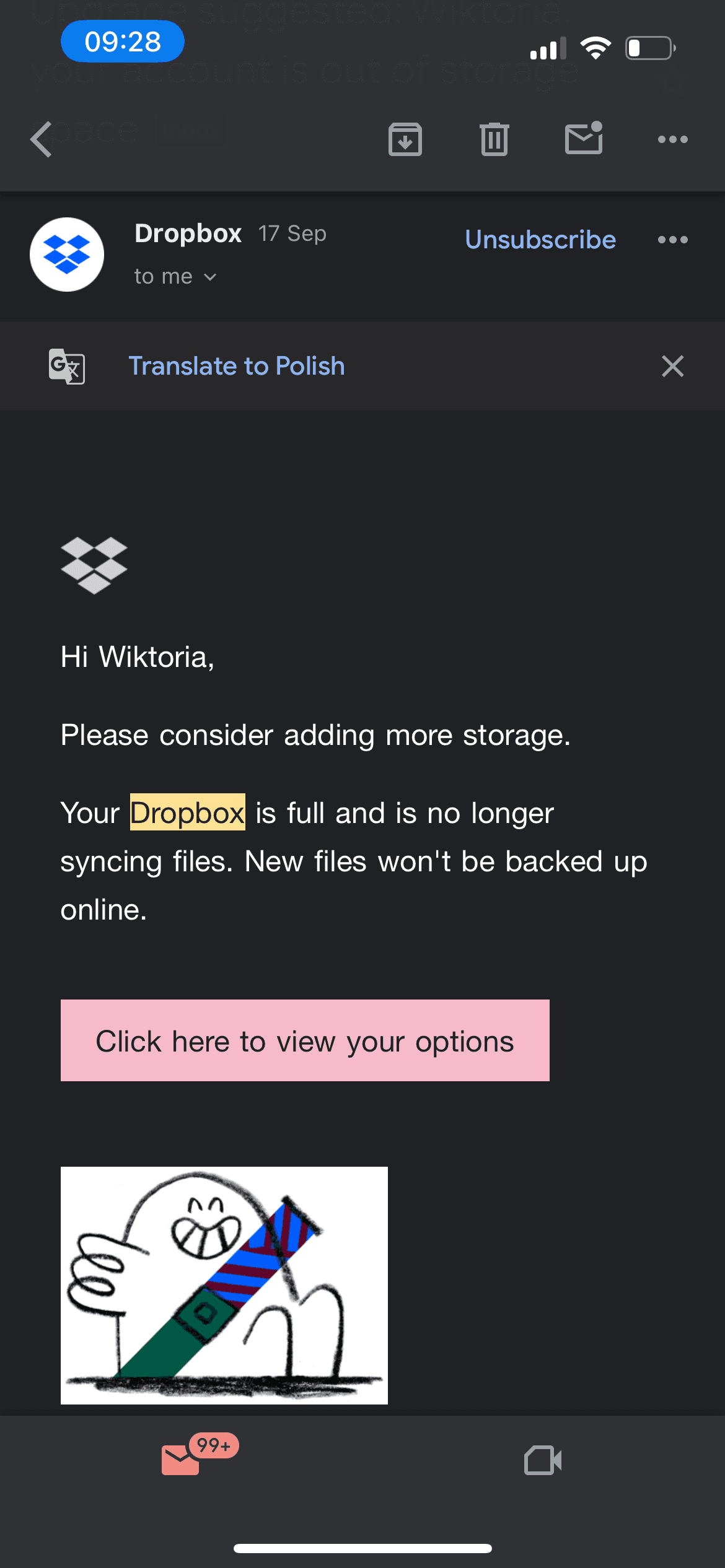
Slack: Uses a freemium model, upselling to paid plans with features like unlimited message archives and group video calls as team usage grows.
Zoom: Started with basic video conferencing and successfully upsold features like webinars, large meeting capacities, and cloud recording.
Effective Cross-Selling Scenarios in SaaS
HubSpot: Cross-sells between its marketing, sales, and service hubs, creating a comprehensive CRM ecosystem.
Atlassian: After a customer adopts Jira for project management, Atlassian often cross-sells Confluence for documentation and Bitbucket for code management.
Microsoft: Leverages its Office 365 suite to cross-sell various productivity tools, from basic (Word, Excel) to advanced (Power BI, Teams).
Key Insights from Successful SaaS Practices
Leverage Usage Data: Use customer behavior analytics to identify upsell and cross-sell opportunities.
Create Seamless Integrations: Ensure that cross-sold products work flawlessly together, enhancing overall value.
Educate Customers: Provide resources and support to help users understand the benefits of upgrades or additional products.
Offer Flexible Pricing: Implement tiered pricing structures and bundle deals to make upgrades and additions attractive.
Focus on Value: Always emphasize the tangible benefits and ROI of upgrades or additional products.
Timing is Crucial: Present offers at moments when customers are most likely to see their value, such as when hitting usage limits or during key business growth phases.
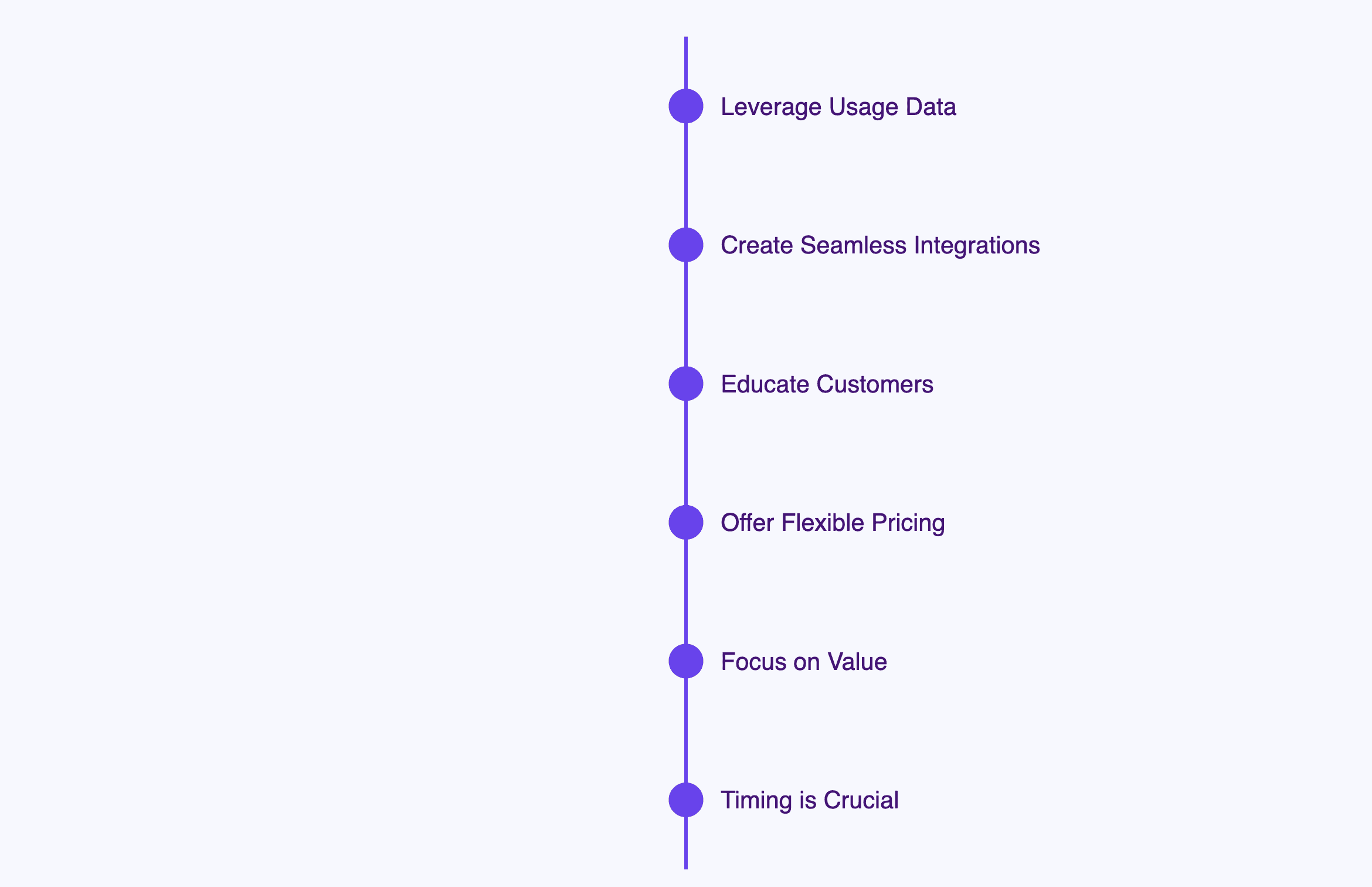
Align with Customer Success: Work closely with customer success teams to identify genuine upgrade opportunities.
Implement In-App Messaging: Use targeted, contextual in-app notifications to suggest relevant upgrades or complementary tools.
Provide Easy Trials: Allow customers to easily try premium features or complementary products before committing.
Use Social Proof: Showcase case studies and testimonials from customers who have benefited from upgrades or additional products.
Maintain Transparency: Be clear about pricing, features, and the value proposition of each tier or product.
Continuously Gather Feedback: Regularly solicit and act on customer feedback to refine your upselling and cross-selling strategies.
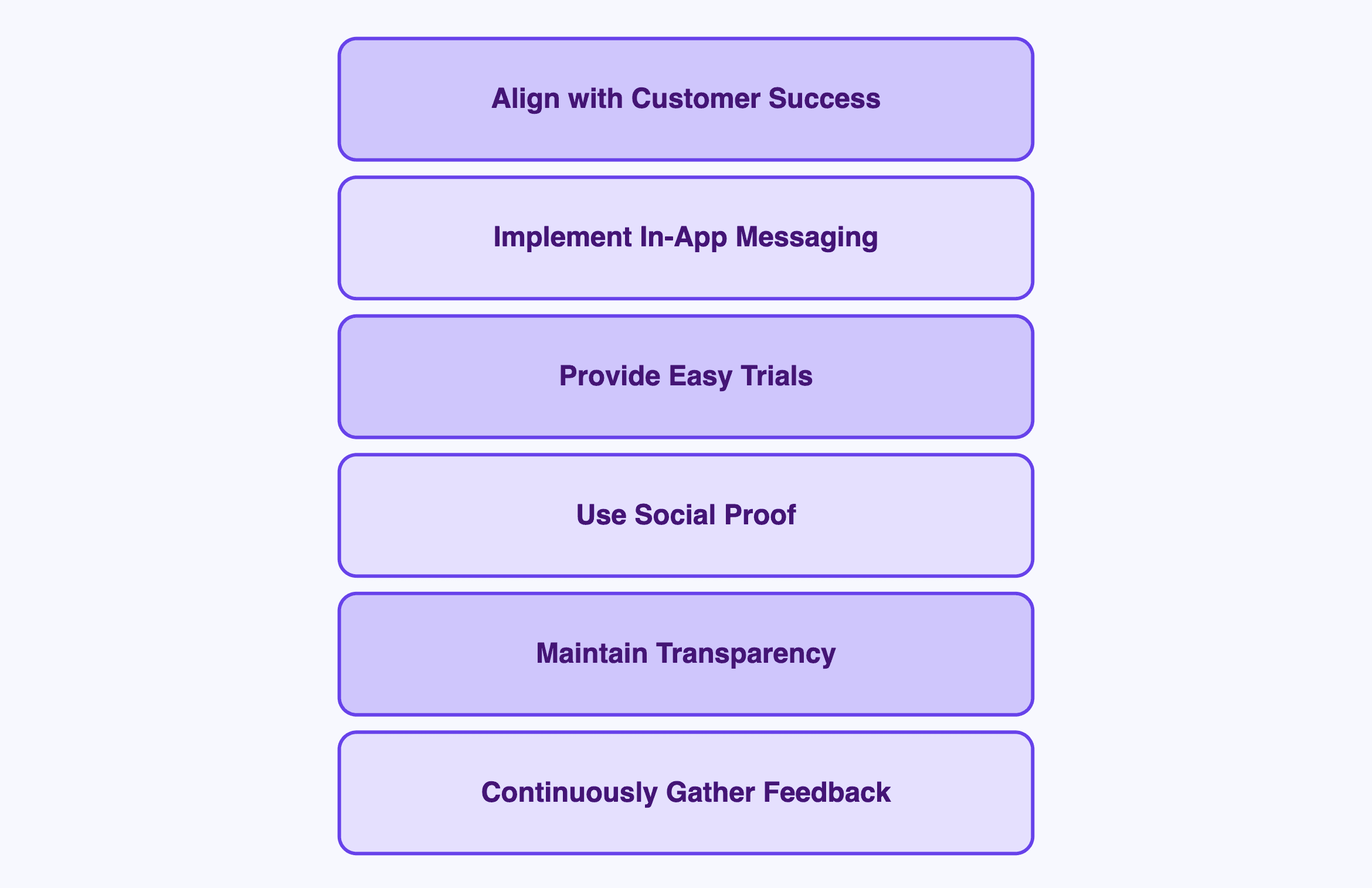
Conclusion
Upselling and cross-selling are powerful strategies that, when implemented thoughtfully, can drive significant growth for SaaS companies while also providing added value to customers.
By focusing on customer needs, leveraging data, and maintaining a commitment to enhancing the overall user experience, SaaS businesses can successfully increase revenue, improve customer satisfaction, and foster long term loyalty.




